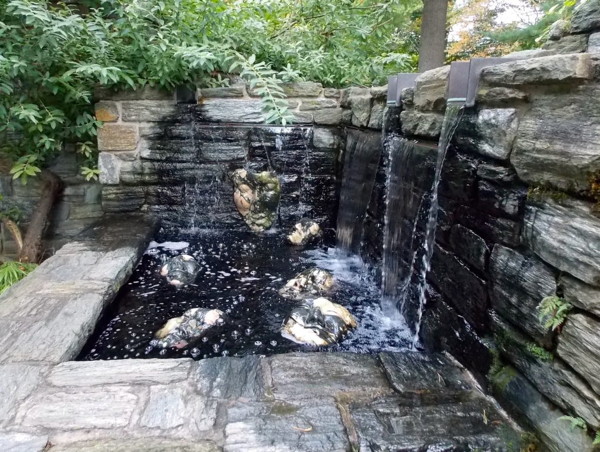
A Visit to Chanticleer Gardens |
A little while back, we at HenFeathers were amazed to discover that Chanticleer Gardens, one of America’s best gardens, was only mere miles from our door. So, we grabbed the cameras, bundled up the gear and headed over to Wayne, Pennsylvania to see what we had been missing. We were impressed. Actually, it might be more accurate to say we were overwhelmed. Chanticleer has created some of the most imaginative and exciting public gardens in the country. The public areas of the Gardens are spread out over 37 acres and are organized into several themed gardens. The gardens are creative and well tended; beautifully designed. What really impressed us was the whimsical spirit, the sense of humor that runs throughout the grounds. The fun is in the details as we learned wandering from garden to garden. We were constantly surprised and elated as we discovered the next whimsey. We were bemused with the Stone Living Room, complete with sofa and easy chairs and imagined it was perfect for the evening garden party. Not the softest of furniture, but, certainly durable. Near the Stoney Living Room is the fascinating Ruin Folly, with its fountain and reflecting pool. Originally, the folly was to be constructed from a home on the estate that had been destroyed in a fire, but deemed unsafe, the remains were torn down and the folly was built from scratch. More views of the gardens below, but visit Chanticleer Gardens to see more.
|




























